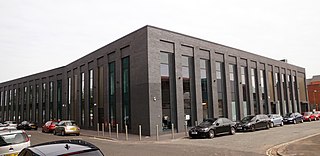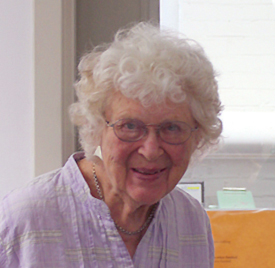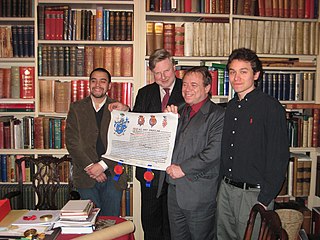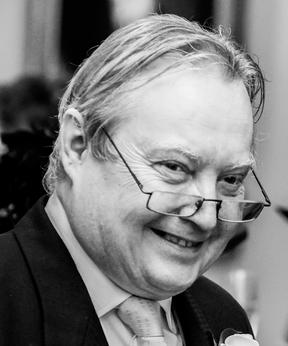Related Research Articles

Jewellery consists of decorative items worn for personal adornment, such as brooches, rings, necklaces, earrings, pendants, bracelets, and cufflinks. Jewellery may be attached to the body or the clothes. From a western perspective, the term is restricted to durable ornaments, excluding flowers for example. For many centuries metal such as gold often combined with gemstones, has been the normal material for jewellery, but other materials such as glass, shells and other plant materials may be used.

A silversmith is a metalworker who crafts objects from silver. The terms silversmith and goldsmith are not exact synonyms, as the techniques, training, history, and guilds are largely the same but differed in that the end product may vary greatly.

A goldsmith is a metalworker who specializes in working with gold and other precious metals. Nowadays they mainly specialize in jewelry-making but historically, goldsmiths have also made silverware, platters, goblets, decorative and serviceable utensils, and ceremonial or religious items.

The Worshipful Company of Goldsmiths, commonly known as the Goldsmiths' Company and formally titled The Wardens and Commonalty of the Mystery of Goldsmiths of the City of London, is one of the Great Twelve Livery Companies of the City of London. The company's headquarters are at Goldsmiths' Hall, London EC2.
A hallmark is an official mark or series of marks struck on items made of metal, mostly to certify the content of noble metals—such as platinum, gold, silver and in some nations, palladium. In a more general sense, the term hallmark can also be used to refer to any distinguishing mark.
Assay offices are institutions set up to assay precious metals. This is often done to protect consumers from buying fake items. Upon successful completion of an assay the assay offices typically stamp a hallmark on the item to certify its metallurgical content. Hallmarking first appeared in France, with the Goldsmiths' Statute of 1260 promulgated under Étienne Boileau, Provost of Paris, for King Louis IX.

The Birmingham Assay Office, one of the four assay offices in the United Kingdom, is located in the Jewellery Quarter, Birmingham. The development of a silver industry in 18th century Birmingham was hampered by the legal requirement that items of solid silver be assayed, and the nearest Assay Offices were in Chester and London. Matthew Boulton and Birmingham's other great industrialists joined forces with silversmiths of Sheffield to petition Parliament for the establishment of Assay Offices in their respective cities. In spite of determined opposition by London silversmiths, an Act of Parliament was passed in March 1773, just one month after the original petition was presented to Parliament, to allow Birmingham and Sheffield the right to assay silver. The Birmingham Assay Office opened on 31 August 1773 and initially operated from three rooms in the King's Head Inn on New Street employing only four staff and was only operating on a Tuesday. The first customer on that day was Matthew Boulton.
Stuart Leslie Devlin was an Australian artist and metalworker who specialised in gold and silver. He designed coins for countries around the world, and became especially well known as London-based designer of collectors' items in the 1970s and 1980s.

Robert Edgar Stone (1903–1990) was an English silversmith who worked in the mid-20th century and was noted for hand-crafted commissions.

Fred Fenster is a metalsmith and professor emeritus of the University of Wisconsin at Madison where he taught art and education. He is particularly known for his work in pewter, influencing generations of metalsmiths. Fenster was named a Fellow of the American Craft Council in 1995.

Hester Bateman was an English silversmith, renowned for her high quality flatware and ornamental silverware. A craftswoman working within the family business, she was succeeded in turn by her sons, daughter-in-law, grandson and great-grandson. The Bateman family silversmithing company lasted until the middle of the nineteenth century.
Hersey & Son is a company founded in Clerkenwell, England. The company is a noted firm of Silversmiths with a history dating back to 1955 when Michael Hersey started his apprenticeship and to 1971 when he and David Mills founded the firm.
Pétur Tryggvi Hjalmarsson was an Icelandic gold and silversmith.
The Goldsmiths' Company Assay Office in London is the oldest assay office in the United Kingdom. The company has provided hallmarking services since The Goldsmiths Company was founded in the 14th century. The company received its royal charter in 1327 and ranks fifth in order of precedence of the 12 great livery companies of the City of London.

Lois Etherington Betteridge was a Canadian silversmith, goldsmith, designer and educator, and a major figure in the Canadian studio craft movement. Betteridge entered Canadian silversmithing in the 1950s, at a time when the field was dominated by male artists and designers, many of them emigrés from the United States, the United Kingdom, and Europe. In fact, Betteridge was the first Canadian silversmith to attain international stature in the post-war studio craft movement.

Pallion designs, manufactures, and distributes precious metal products and related services. It is the largest precious metal services group in Australasia. Pallion is the result of the merger in 2014 of the ABC Bullion and Palloys Group of companies founded in 1972 and 1951 respectively. The group maintains its headquarters in Sydney NSW Australia and is a wholly privately owned group of companies with manufacturing facilities and offices in Sydney, Melbourne, Brisbane and Perth in Australia, Hong Kong (SAR), mainland China, Thailand and Western Europe.

Ari Daniel Norman is a British designer and manufacturer of traditional and modern sterling silver jewellery and gifts. Norman is the founder and director of Ari D Norman Ltd, international supplier of sterling silver designs to the trade and consumer market, and creator of the Ari D Norman brand.

Charles Henry Truman, FSA, was an art historian and a leading authority on gold boxes.
Gilbert Leigh Marks was an English silversmith, who worked in the Arts and Crafts style, during a career of little over ten years.
Joyce Rosemary Himsworth was a British independent designer silversmith. From an early age she worked with her father, the polymath Joseph Beeston Himsworth (1874–1968) making small spoons and items of jewellery. She went on to study at Sheffield College of Arts and Craft, focusing on jewellery manufacture and enamelling. Her undoubted talents were not enough for her to gain a position within the family cutlery firm, B. Worth & Sons.
References
- 1 2 "Better late than never". The Guardian. London. 29 July 2003. Retrieved 29 December 2010.
- 1 2 3 A Sterling Renaissance: British Silver Design 1957-2018. October 2018 – May 2019. SFO Museum, San Francisco.
- ↑ "Burton". Telegraph Announcements. Retrieved 28 April 2020.
- ↑ "The Queen of silver linings". Women Talking. Retrieved 29 December 2010.
- ↑ "Who's who in gold and silver". Goldsmiths Company . Retrieved 29 December 2010.
- ↑ "Midweek". Midweek . Retrieved 8 September 2014.